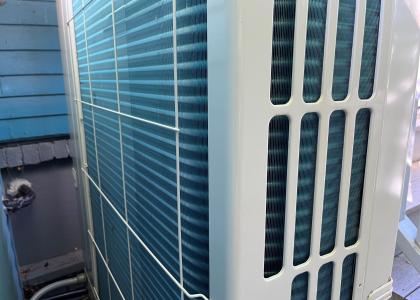There are many tried-and-true tools in the energy efficiency toolbox. Programs in the utility sector that offer customers a variety of rebates, incentives, and technical services totaled more than $7 billion in 2014. In the private market, energy service performance contracts totaled more than $4 billion. And state energy offices loaned more than $74 million in revolving loans.
While these investments have led to substantial energy savings, there’s still enormous potential. One study estimated that more than $279 billion could be invested in energy efficiency retrofits and upgrades in commercial, residential, and institutional markets in the United States, resulting in more than $1 trillion of energy savings over 10 years. But getting there may require expanding our toolbox. Green banks are one strategy gaining more attention from states and local governments.
In a new report from ACEEE, we review the progress of six green banks and four additional financing entities that serve similar functions. Our goals were to understand how green banks are working in specific market sectors and to identify promising strategies and lessons learned, with a particular focus on energy efficiency. If more states are looking to green banks to stretch public dollars, fill market gaps, and ramp up clean energy investment, we want to know how the early results and lessons learned can shape the next round of green bank deployment.
What is a green bank?
There is no one established definition of a green bank. Green banks are typically created by state and local governments to address the barriers faced by consumers and lenders in financing clean energy projects and environmentally beneficial technologies. They take many shapes, but in general, green banks share the following key features:
- They are publicly chartered financing institutions.
- They have a mandate to invest in clean energy deployment.
- They leverage public funds to stimulate private capital.
- They offer products across sectors, focusing on bridging market gaps.
What do the data show?
We reviewed current and planned portfolios of green banks to better understand their role in catalyzing energy efficiency projects. Many of these institutions are in the early stages of planning or deployment, so data are limited. However, we did find some interesting results. Here are just a few:
- Nearly all of the green banks we reviewed invest in both renewable energy and energy efficiency projects, or they have plans to expand portfolio offerings to cover both. However, established green banks like Connecticut Green Bank tend to have portfolios that lean heavily toward renewable energy projects, suggesting opportunity remains for investing in efficiency. Furthermore, we found relatively few projects combining energy efficiency and renewables.
- Data on energy savings are less commonly available. For green banks that were able to report them, statewide incremental energy savings amounted to less than 0.01% of statewide electricity sales. The limited size of these energy savings reflects the relative newness of green banks, with many programs not yet reaching full scale.
- Partnerships can be the key to success. We found that most green banks work in tandem with utility-administered programs, leveraging ratepayer-funded programs to achieve deeper energy savings.
What does the future hold?
Green banks are still relatively new, and there is significant opportunity to expand and refine program offerings. Green banks have ambitious goals of deploying clean energy technologies and delivering energy savings. But to better understand the current and potential impact of green banks, we need better data. Several green banks are taking the lead in developing thorough tracking and evaluation metrics that will help us better understand the role green banks play in the marketplace.
Green banks show promise in several states, and we expect that more states will consider whether a green bank is the right fit for them in the future. But they are not the only strategy to provide streamlined clean energy to customers, and several states have chosen to fill market gaps by leveraging an array of existing programs and services. Ultimately, whether states choose to develop green banks or deploy clean energy resources in other ways, partnerships and integration of services will be the most important tool for breaking down market barriers.


